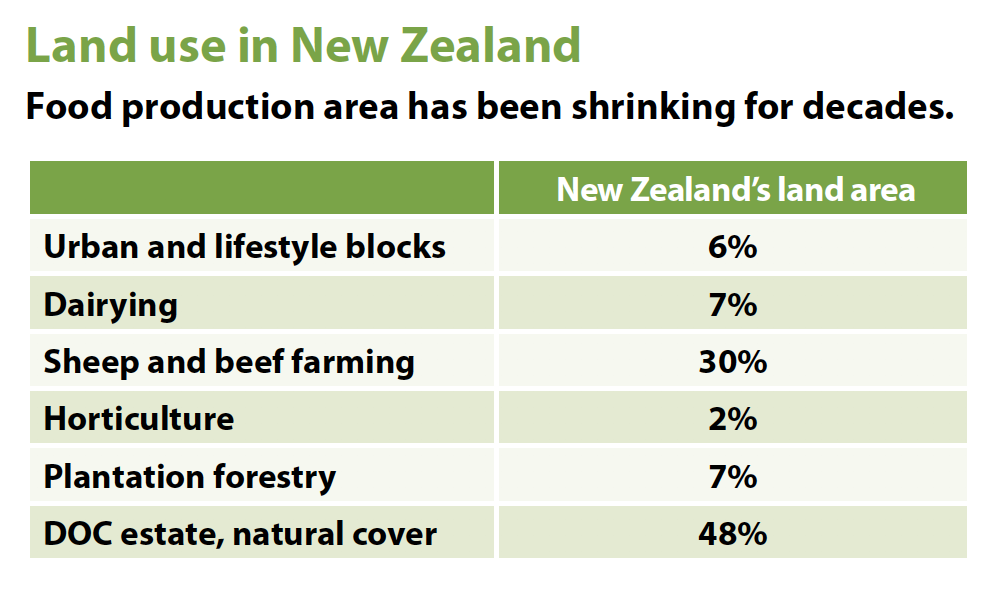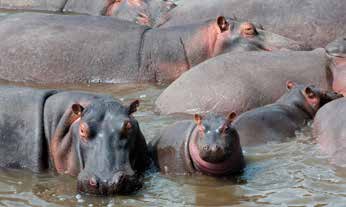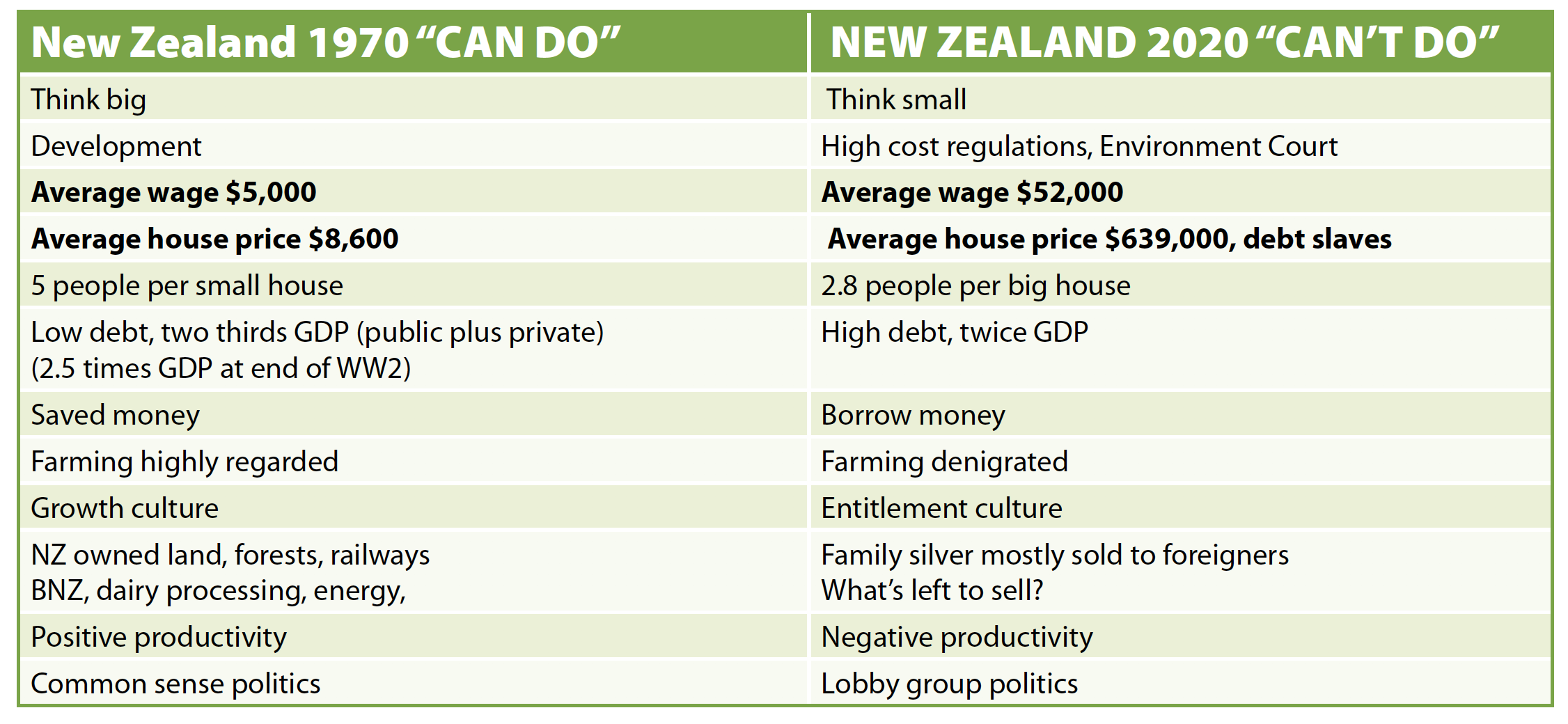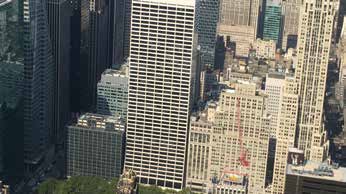Aristologist – one who studies or takes part in the art or science of cooking and eating (dining) with particular interests and skills in the preparation, combination and presentation of food dishes, wines, spirits, flavours and tastes; one skilled in the art and science of eating.
Google Maps goes off-road
08/10/2020A West Coast farmer has found Google Maps has listed one of his farm tracks as a road:
Andrew Stewart is a sharemilker at Taramakau, inland from Kumara, on the West Coast.
He said the so-called road is in fact a farm race used for herding stock or driving tractors.
Upon learning of this, he became concerned at a potential risk to security, and the safety of livestock, as well as possible health and safety issues for people who might see the road on Google Maps and try to drive along it.
“One of the neighbour’s wives was looking on Google Maps, and and some of their farm races were marked as roadways,” he said.
“So I looked at my own farm to see if the tracks were listed as roads, and they were.”
Stewart said no one had so far tried to get onto his farm race, but there were still worries for him about the security of his farm.
“An average Joe Bloggs looking for ways to get to rivers to go fishing, or to go tiki-touring around, could pull out Google Maps and be led astray,” he said.
“They could be led into places where they did not have permission to go, onto workplaces with risks to health and safety, to security of livestock and to biosecurity.” . .
We’ve got the same problem.
If you ask for directions to our home on Google Maps it gets you onto our road, but about 100 metres from our gate it turns off onto a side road and then onto a farm track, past our dairy shed and a dam, and into the yard by the tractor shed.
This morning a truck driver used Google Maps to get to one of our dairy sheds and it took him off-road, onto a farm track, almost twice the distance he’d have had to go had it kept him on the road.
In response to this problem, RNZ telephoned Google New Zealand and the track was almost immediately removed from the map of roads.
But Carrie Jones, who’s communications manager for Google New Zealand, said Google users could fix the problem themselves.
“We use a variety of sources to get accurate and up to date information on the maps, and we use a combination of manual and automated techniques to check for accuracy,” she said.
“But the world changes at such a rapid pace that sometimes errors do happen.”
But she said users themselves could help to fix this problem.
“Of course we empower our community to help us by submitting corrections via the problem tool on Google Maps.”
I did that last Monday, got an almost instant response by email saying my suggestion was being reviewed and they’d let me know when changes were published.
But no changes have been made and directions still say to turn off our road, take the side road and farm track.
Rural round-up
08/10/2020Farmer Jane Smith claims that farmers find comments from David Parker, Damien O’Connor and the Green Party’s James Shaw nauseating.
“This is our licence to operate with our global trading partners and will attract added-value premiums,” she says.
“This lacks any metric or rationale,” says Smith. “We are creating our own hurdles at a rate higher than any other primary producer in the world. For every dollar spent on food worldwide, the farmer receives on average, less than 10 cents.”
This is a topic of discussion Smith often has with offshore peers around the Global Farmer Roundtable. . .
Critic calls for major investigation into freshwater reforms :
Award-winning, environmentally-focused farmer Jane Smith wonders whether she’s farming in North Otago or North Korea.
She is calling for a full review into the process behind Ministry for the Environment’s (MfE) Fresh Water National Policy Statement – particularly around the recent legislation for winter grazing practices and land use categorised solely on slope.
“The public have been sold a sanitised version of the truth and are going to pay an unacceptable price for what I suggest is effectively an abuse of legislative power,” she told Rural News.
While Smith is opposed to the punitive regulations in their current form, it is the process that she is challenging – rather than the outcome itself. She says her time in a myriad of governance roles have shown the importance of transparency in procedure behind every decision. . .
Fonterra sells farms in China to reduce debt get back to basics – Point of Order:
Dairy giant Fonterra has scooped in $555 million by selling its China farms and is now aiming to unload its yogurt business, a partnership with Nestle, located in Brazil, as it pursues its strategy of seeking greater value, rather than volume, in its business.
Fonterra CEO Miles Hurrell conceded the China farm business
“ … has been a tough journey for us along the way, we had to take an impairment to that asset in 2019 and again in 2020 so certainly they haven’t been as operationally effective as we would have liked. That said, we have made significant progress of late and that’s put us in a better position to sell these assets.”
Fonterra is expected to use the proceeds to pay down debt which under Hurrell’s watch has already been trimmed in the past year to $4.7bn after peaking at $7.1bn. . .
Lift in sheepmeat exports to Europe and UK shows importance of retaining WTO tariff quota:
New Zealand sheepmeat exports rose 12 per cent by volume and five per cent by value in August compared to a year ago, according to an analysis by the Meat Industry Association (MIA).
A fall in sheepmeat exports to China (-13% by value) was offset by a significant increase in demand from the UK and Europe despite the uncertainty of the fast-approaching Brexit.
A total of 2,044 tonnes of sheepmeat was exported to the UK in August 2020, a 43 per cent increase on August 2019. Exports to the Netherlands rose by 80 per cent and to Germany by 30 per cent. France and Belgium also saw increases. . .
New Zealand’s first plant-based milk bottle lands on shelves:
Anchor has added to its Blue range, with a new 2L bottle made from sugarcane – which is a natural, renewable and sustainably sourced material
-
- The new bottle is an example of sustainable packaging which research indicates is increasingly important to consumers.
Anchor is set to launch New Zealand’s first plant-based milk bottle which is 100% kerbside recyclable, and aligns with Fonterra’s commitment to have all packaging reusable, recyclable or compostable by 2025.
Anchor Blue 2L in the new plant-based bottle will land on shelves across New Zealand’s North Island from October 13th. And while it’s still filled with the same fresh NZ dairy milk from Fonterra farmers – the bottle is made from sugarcane. . .
Stahmann Farms plants close to 40,000 more pecan trees at Pallamallawa property near Moree – Sophie Harris:
Trawalla has well and truly cemented its place as the largest pecan nut farm in the southern hemisphere, with close to 40,000 more pecan trees planted at the Pallamallawa property in north west NSW over the past few weeks.
A total of 39,000 pecan trees have been planted on 195 hectares of Trawalla’s neighbouring property, Long Creek, over the past five weeks.
This brings the total number of trees in the ground on Stahmann Farms’ Pallamallawa operation, including Trawalla, Red Bank and Loch Lomond, to 150,000. . .
Sink or swim
08/10/2020Derek Daniel, a Wairarapa farmer, put a brochure headed Sink or Swim? in the latest issue of NZ Farmers Weekly.
It is also on his website and says:
Where is the New Zealand economy headed?
Over the past few years food producers in New Zealand have been subjected to a relentless smear campaign by lobby groups, media and the government. The general public has been brainwashed to think that our food production needs radical change. This Blame Game has focused on GHG emissions, water quality, and biodiversity. It’s time to put the record straight.
Over half of this country is in trees, mountains, natural cover. ALL farming is 39% of total land area. A projection of current trends is shown in the graph on page 3. How is New Zealand going to earn a high standard of living? What happened to “the Switzerland of the Pacific”? Is Auckland really the powerhouse of the economy? How would Auckland get on as a separate nation like Singapore?

“The Environment” has become a religion for some people. Lobby groups get their funding by creating anxiety. The Green Party gets most of its votes from wealthy electorates, so the rich, who tend to have the most GHG emissions from driving and flying, can appease their consciences.
New Zealand has clean water
Google lists New Zealand as one of seven nations with the cleanest water in the world. What’s the prize for being cleaner than that? There is an annual swimming race in the Waikato river through Hamilton, though the race stops short of the sewer outlet. Auckland beaches are swimmable some of the time. How many rivers in New Zealand are not swimmable? There are problems with E. coli sometimes, but that is usually because of birds.

Ten thousand flamingos… a beautiful sight but, you wouldn’t want to swim there.
Double standards apply: cities escape severe fines for breaches of sewage and stormwater regulations, but food producers get hammered.

Rivers aren’t fenced in Africa
Another contradiction in the official line is “that sediment is bad”.
But where did human civilisations set up? Today there is huge angst in Vietnam about the Chinese building more dams on the headwaters of the Mekong river, because the annual floods bring new soil to farmers in Vietnam, renewed fertility.
Nutrient: there is huge pressure to keep animals out of waterways here, yet the same people enjoy watching large animals in Africa playing in rivers and lakes. Three tonne hippos live in the water. Strangely enough, Africa has 22 times the number of freshwater fish species than New Zealand, 1,279 versus 58. Nutrient feeds life. Other countries fly fertiliser onto lakes to feed plant life to grow bigger fish.

Do “greenies” understand the big picture? Big animals live in African rivers and there are 1279 species of freshwater fish, compared to 58 in New Zealand’s barren rivers, where the water is too clean.
Native fish in New Zealand thrive in unfenced pools in well developed farmland, where “piranha like” brown trout are not present, and more nutrients are in the water (PhD research paper).
And Australian police have detained more than two hundred people who have deliberately lit fires… but global warming gets blamed.
Biodiversity
New Zealand always had poor biodiversity

At their peak, livestock were grazed over 60% of New Zealand’s land area. That’s down to 37% now. Large areas have reverted to scrub and native bush, and many hectares have been retired by DOC or donated by food producers as QE2 covenants. Some species of native birds have grown in numbers, and some species have self introduced.
Why taxing methane is theft
-
- It is unjust. It fails to recognise the natural carbon cycle.
- It is unscientific. The method of assessing the levels of methane from ruminants is flawed.
- It is unfair. The assumptions are based on figures that are officially + or – 50%.
- It is unlawful. The Paris Agreement said to exclude food production.
- It is economic madness. Why leg-rope the sector leading the recovery?
The Paris Accord has a goal of stabilising GHG emissions in a way that does not reduce food production. New Zealand agriculture has complied with those requirements since 1990. New Zealand is squandering its land resource, with no planning around food security for a population which is increasing by two percent per year.
Reinventing New Zealand?

With the odd exception, New Zealand is now led by people who have never been hungry, never fought in a war, and never run a business. Will we have the discipline, as our forefathers did, to rebuild at an affordable cost?
Reality check
The current government is engaged in granting an extra holiday, and five more days of sick leave. “Let’s stop moving”… Meanwhile, new immigrants are fast taking over ownership of the best cashflow businesses, because they work hard, and avoid employment and overtime costs by working within the family. Politicians pander to the bottom 20% of society while imposing more and more cost on businesses. How is New Zealand going to compete on the world stage?

Just like animal feedlots, the feed is trucked in and the waste piped out. New Zealand earns its living from the land, not from the cities.
NZ’s productivity crisis
-
- The internal cost structure to build houses and roads is well above what our export sector can afford.
- Endless environmental reports. What % of NZ’s 94,000km of roads are an “environmental disaster”?
- 15 years to action an irrigation scheme while costs double and triple.
- Every extra bureaucrat has to justify his/her existence. The regulators are breeding.
- Symbolic gesture: banning exploration for oil and gas will lead to more imported energy.
- Economy held together by productivity increase in the agricultural sector.
- You will pay indirectly for the carbon credits paid to rich people who plant trees. One estimate is $7,000 per household.
Solutions
-
- The planet is overstocked with people, the root of all our problems? Cap New Zealand’s population at 5 million.
- New Zealand’s Paris Accord targets: remove ruminant emissions. Remove the government guarantee of carbon credit payments for planting trees.
- Continue oil and gas exploration, target self- sufficiency.
- Impose a significant entry charge on tourists. Increase foreign visitor charges for all tax payer created facilities, e.g. Aotearoa trail. It works in Bhutan.
- New Zealand agriculture is more regenerative of soil fertility than most countries in the world.
- Don’t handicap food production with stupid regulations.
Written by Derek Daniell, farmer in the Wairarapa. “It’s a huge worry to witness the kneejerk, political response to the Paris Accord… blame the animals? There is so much muddled thinking for the short term, not for a sustainable New Zealand.”
Get a copy of this document: Feel free to download and share this document.Download and Share
Peter Williams interviewed Derek on Magic Talk: (35:07).
Jamie Mackay interviewed Derek on The Country in which he made some additional points:
. . . The ETA is and earnest attempt to align New Zealand’s GHG emissions with the Paris Accord. But subsidising tree growing is not changing behaviour around the use of fossil fuels.
Consider the actions of much richer countries: Norway has not stopped exploration for oil and gas; Singapore has not reduced air traffic through Changi airport, or shipping through its port.
New Zealand is naive to think that it can be a world leader in reducing man made climate change. Shooting yourself in the foot hurts.
Trees are good?
A thirty year crop is a big risk. Log values over the past thirty years have been low more often than high.
Eighty per cent of our export logs currently go to China, where almost all of them are milled for boxing around concrete, used, then burnt. So much for capturing carbon – it’s a farce!
Is logging sustainable seventeen times in five hundred years?
Pine trees have damaging effects on soils, streams, aquatic life, and inshore fisheries – and logging trash ruins beaches.
It is a very expensive process to reinstate food productions on logged-over areas.
You can’t eat wood. . .
Derek is articulating what many, perhaps most, farmers And growers are thinking.
Agriculture and horticulture kept going through the lockdown, producing food for the local market and earning much-needed export income from international ones.
We cannot possibly get through the Covid-induced economic crisis by handicapping primary production with environmental restraints that ignore, and in some instances go against, the science.



 Posted by homepaddock
Posted by homepaddock 